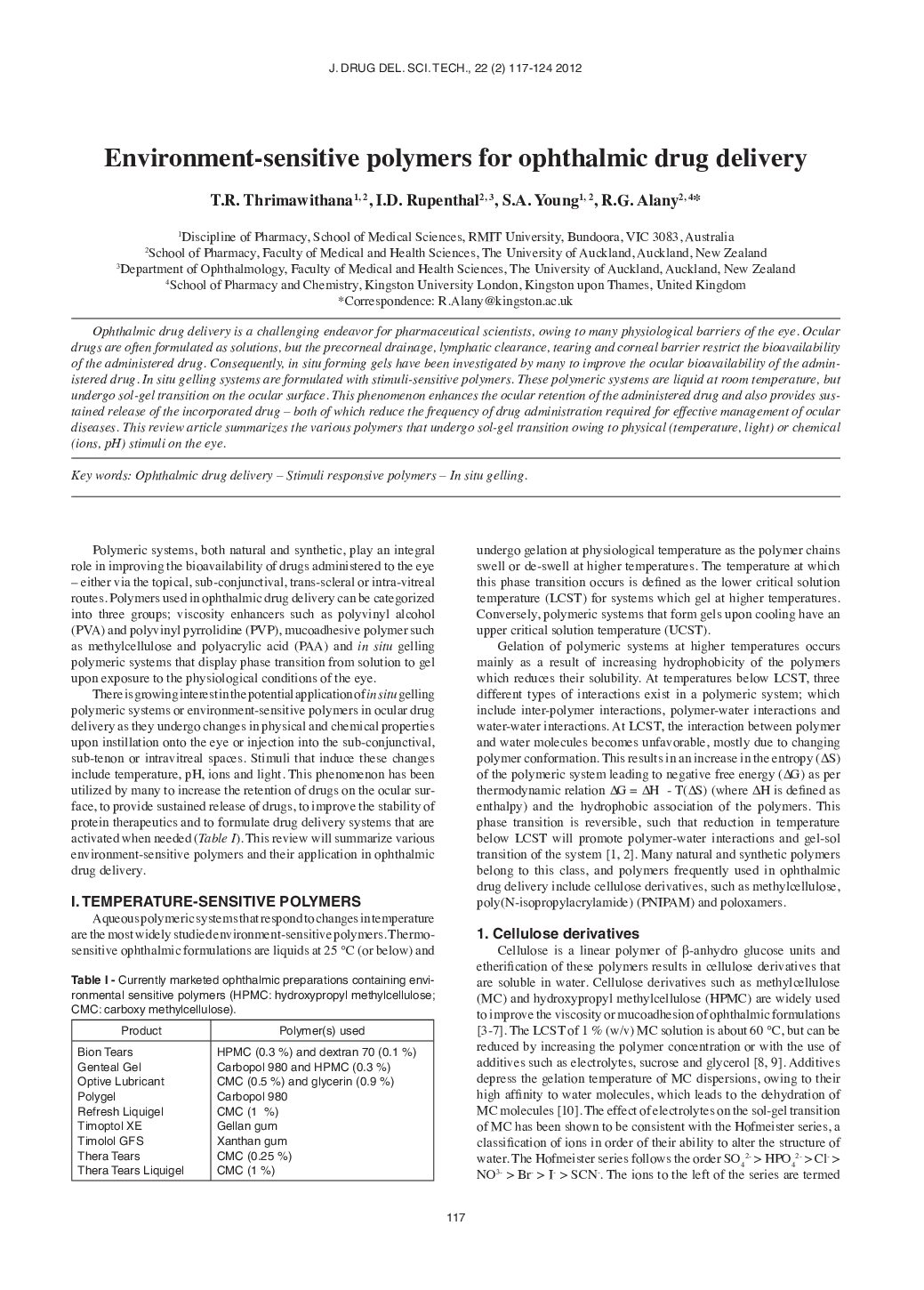| Article ID | Journal | Published Year | Pages | File Type |
|---|---|---|---|---|
| 2483399 | Journal of Drug Delivery Science and Technology | 2012 | 8 Pages |
Ophthalmic drug delivery is a challenging endeavor for pharmaceutical scientists, owing to many physiological barriers of the eye. Ocular drugs are often formulated as solutions, but the precorneal drainage, lymphatic clearance, tearing and corneal barrier restrict the bioavailability of the administered drug. Consequently, in situ forming gels have been investigated by many to improve the ocular bioavailability of the administered drug. In situ gelling systems are formulated with stimuli-sensitive polymers. These polymeric systems are liquid at room temperature, but undergo sol-gel transition on the ocular surface. This phenomenon enhances the ocular retention of the administered drug and also provides sustained release of the incorporated drug – both of which reduce the frequency of drug administration required for effective management of ocular diseases. This review article summarizes the various polymers that undergo sol-gel transition owing to physical (temperature, light) or chemical (ions, pH) stimuli on the eye.
